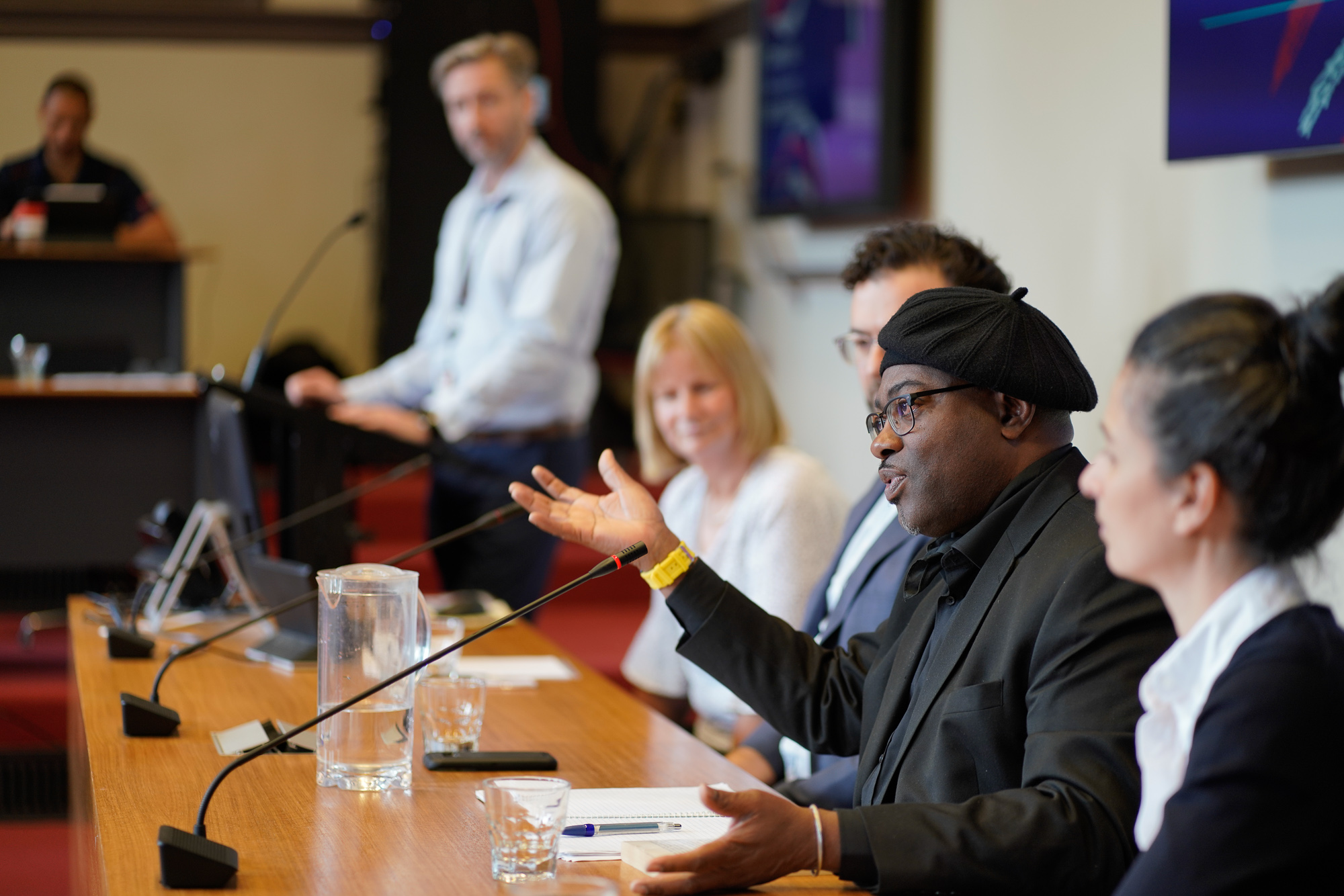
Gamification is a word heard a lot in the learning world. Have you ever wondered why we should use it? How? When?
In this month’s Think Tank expert panel session on 14 November, the VE Design Team proposed the following question:
“What is best practice in gamification for VET, industry and skills training?”
Our experts for this panel discussion were:
- Aliki Christou – Learning Manager at Clear Horizon
- Dr Charles daCosta – Lecturer Animation at Queensland University of Technology
- Andrew Del Mastro – Design Thinking and Innovation Leader at St Aloysius college
- Diana Swift – Executive Manager – Transforming Learning Pathways & Vocational Education (PAVE) at Swinburne Uni
VE Design Team’s Gordon Napier hosted the discussion and topped and tailed it with his own amusing take on gamification. You’ll have to watch the video to find out more…
First up was Aliki, who invited us to answer, ‘What comes to mind when we think about gamification?’ We contributed our answers straight onto the screen via Mentimeter.
Aliki described gamification as follows:
Gamification is the use of game elements in a non-gaming context to drive user engagement, loyalty and motivate the desired action.
In VET, industry and skills training, gamification focuses on motivating a learner to achieve the desired learning outcomes. It aims to impact learner behaviour in the context of work or a simulated work environment.
Aliki then explained how Gamification is about influencing behaviour and she discussed Fogg’s behaviour model:
Behaviour = Motivation + Ability + Prompt (or Trigger)
Behaviour will only happen when three elements converge at the same moment in time.
Important things Aliki wants us to consider with gamification:
- Understand your learners. What works for your particular learners?
- Make sure gamification elements are aligned with the learning outcomes
- Make it fun!
- Evaluate – use data and feedback to test and measure the impact
- Iterate
Lastly, Aliki shared the gamification elements she uses in her work.
Our second panellist, Charles, took a very different approach to the topic.
We watched a video of lion cubs, our thoughts alternating between ‘Aww, they’re sooo cute’ and ‘Oh no! Are they really going to kill that beautiful giraffe?’
Charles emphasised the importance of one word: Play
Have we taught students to play together so they can collaborate?
When did we last play a ‘traditional’ game?
What can we learn from observing people playing games?
- Children invent games when they play together
- Social structures emerge
- Behaviour – we all have that friend who’s super competitive, don’t we?
Experiential design starts with experience before design.
Charles wrapped up by talking about the importance of working with and identifying as part of a group… a tribe…and, back to those lions, a pride.

Our third panellist, Andrew, talked about the classic board game ‘Monopoly’ and how it’s an example of learning through games.
Did you know it was originally called ‘The landlord’s game’ and it was invented to warn against the evils of capitalism?
Play games to learn about gamification.
Learn through discovery – content discovery by solving a problem. E.g. The Discovery Channel.
Use leaderboards – but perhaps not so great for the self-esteem of the person at the bottom.
Learn through failure – encourage students to fail and fail early.
Gamification can be created with simple tools, such as an Excel spreadsheet. Andrew shared an example where students could enter assessment results to predict their VCE study scores. And conversely, what marks did they need to get to achieve their desired study score?

You can use gamification to control your learning path – e.g. unlocking modules if you achieve above a certain mark.
We want to create problem solvers – this is what’s driving Andrew’s school’s push towards gamification.
Diana, our final panellist posed some important questions for us:
Is the increased engagement with gamification going to work for all your students in vocational education (VE)?
Gamification needs to be tightly linked to the curriculum. Is it just pumping out more content? Is it meeting the desired outcomes?
Students going into VE straight from school are used to technology in the classroom. What about older students? Students from different cultures?
Does gamification decrease the attention span? Are we developing the right attributes in students? What about the cost?
Don’t let gamification take away from the teacher sharing their vocational knowledge with students.
Be careful about managing students’ self-esteem. Are we just creating another competitive environment?
We ended the session with questions from participants – both in the audience and watching via the live-stream. Here are the key points. You can watch the full video to find out more.
How do you help non-gamers ‘get it’?
- Use glossaries, induction modules, use their language.
What are strategies to make students care about leaderboards?
- Connect leaderboards to the outcome and the assessment
- Allow opting out of leaderboards – monitor your progress privately
- Reset the leaderboard for each new module
- Leaderboards can be useful to check if people are actually working.
What about cultural barriers – restructuring gamification activities for diverse cohorts?
- Focus on collaboration and working as teams, i.e. essential workforce attributes
- A leaderboard is only one element of gamification
- Identifying as a tribe right from the start.
Recommendations of free tools?
- VCE score predictor (was done in Excel)
- Quiziz
- Good old pen and paper
- Working as a team.



